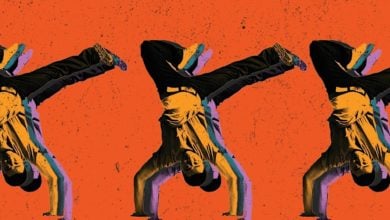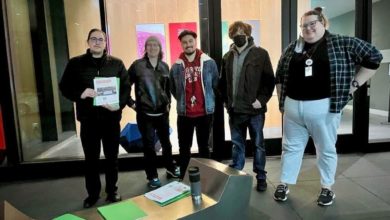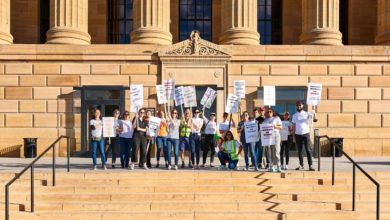 |
In the 1960s, the Mississippi Delta region where Memphis is located was the poorest region of the United States. Black workers lived in abject poverty. Migration to the city did little to change this. The video details how Black workers’ attempts to organize for decent wages and living conditions were brutally suppressed. With the underpaid Black workers forming the basis of the economy, the values of the Old South remained unchanged.
According to the documentary, Memphis had quietly integrated public facilities in an attempt to spare itself the uprisings of Selma, Little Rock and Birmingham. Black people were finally admitted to movie houses, libraries and department stores. But, economically they remained locked in the most menial jobs at the lowest wages. Nowhere was this truer than in the Department of Public Works.
The jobs of sanitation workers-at the time referred to as “garbage men”-were reserved for Black men. White people in the southern cities considered it beneath them to take such jobs. The film documents the filthy work that was left for the African American sanitation workers: lifting fifty-gallon cans, filled with bug- and maggot-infested garbage, which leaked all over them.
Workers would have to take off their clothes before entering their homes to spare their families the stench. They worked long hours with no overtime pay, benefits, paid vacations or grievance procedures. If they were injured on the job they could be fired. The pay was so low that all of the workers could qualify for welfare even though they worked a fifty-plus- hour week.
In 1963, T.O. Jones led thirty-two other workers in walking off the job to protest working conditions. All of them were immediately fired. Most got their jobs back over a period of time, but the point was made: no worker organizing would be tolerated.
T.O. Jones did not go back to work. Instead, he contacted the State, County and Municipal Employees union and established AFSCME Local 1733. Still, most workers were afraid to join. Jones did not give up. His persistent message was that if all the workers got together, they could bring about changes.
The turning point came in 1968. When it rained, Black sanitation workers had to stay outdoors and work. Yet, white supervisors could stay indoors and get paid for the day. Black workers who refused were often sent home without pay.
On Feb. 1, 1968, two Black workers trying to keep out of a torrential downpour climbed into the back part of a garbage truck to keep dry. An electrical short turned on the compactor, killing the two workers. Their families received no compensation or insurance. On Feb. 12, all 1,300 workers went out on strike demanding union recognition and a dues check-off system so that workers could easily join the union.
Memphis Mayor Henry Loeb was a millionaire businessman. He refused to negotiate and demanded that the workers return to work. He had the backing of the majority of the City Council, the newspapers, the business community and a white populace brainwashed with racism. All of this was backed up by the guns, clubs and gas of the Memphis police force.
Civil rights and workers’ rights
The film’s main point is how the labor movement fused with the growing Civil Rights movement in this important strike. AFSCME’s 375,000 members and International union leadership sent resources to back the strikers. In addition, the African American community organizations rallied to support the strike.
A brutal police attack on a union march galvanized support for the strike from the entire Black community. Ten thousand people marched to protest the attack. The documentary highlights the wide range of tactics that the community used to mobilize support for the strike: marches, sit-ins, boycotts, all-night vigils and picket lines. The whole Black community participated, from the very young to the very old. Meanwhile, the garbage kept piling up.
Martin Luther King, Jr. threw his support behind the strike by coming to Memphis in March 1968. This put a national-indeed, an international-spotlight on the strike. Rev. King was in the process of building the Poor People’s March on Washington for Jobs and Income. Hundreds of thousands were to march on the Capitol, where they would stay until they got results to their demands. King saw the struggle in Memphis as a part of that movement.
Over 17,000 turned out on March 16 to hear Dr. King, when he called for a mass march. The March 28 march was attacked by the police on the pretext of marchers breaking windows of downtown stores. The police murdered a 16-year-old Black youth, injured over 60 others, and arrested over 280 people. The victims were overwhelmingly African American.
 Photo: Bill Hackwell |
The film illustrates important differences within the strike’s supporters over the question of nonviolence. Some saw nonviolence as a principle while others saw it as a tactic. This debate took place across the mass Civil Rights movement.
Those who viewed nonviolence as a tactic pointed to the fact that African and African American people had been the recipients of systematic violence since the slave ships arrived on African shores to gather their human cargo. They noted that the same people who turned a blind eye to that mass genocide were now upset because some windows were broken. These same people then responded to the civil rights movement by killing and injuring people.
Those opposed to nonviolence as a principle argued it is sometimes tactically correct to engage in nonviolence when the oppressor has all the weaponry. But, African Americans have every right to end their exploitation and oppression by any means necessary, including the right to use violence against their oppressors. This position was taken up by Malcolm X, Robert Williams and the Black Panther Party among others-all arguing for the right of African Americans to defend themselves against racist violence. For this, they were often labeled as “violent.”
Rev. King was calling for another march in Memphis that would include all groups, whether they accepted nonviolence as a principle or as a tactic. He wanted to keep the attention on supporting the striking workers. But before this could happen, he was gunned down.
The national and international outrage at both the assassination and the situation of the Black workers forced the city to back down. The union was recognized and the workers won the right to have the dues check-off. The union did not win everything it wanted and deserved, but it was a start.
A main lesson of this video is it is better to struggle than not. It also illustrates that victory sometimes is a long time coming-but if we persist, it will come. The struggle in Memphis combined struggles for equality and for workers’ rights. It was a community struggle as well as a union struggle.
It also provides a vivid example of how workers from the most oppressed communities form the vanguard of the multinational and multi-ethnic United States working class in struggle. Struggles like these will ultimately lead to a new society free of exploitation and oppression. Those lessons are all especially relevant today in the struggle to build a united movement against racism, exploitation and war.
“At the River I Stand” (1993) was produced and directed by David Appleby, Allison Graham and Steven John Ross. It was released by California Newsreel in VHS or DVD and is 56 minutes long.





